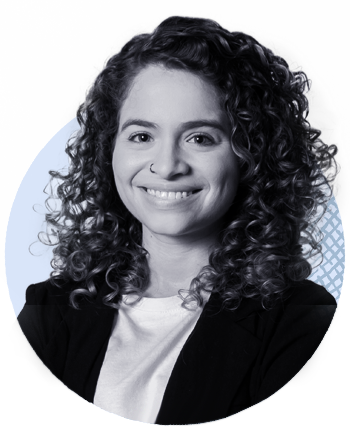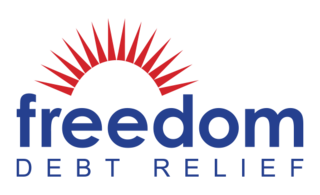What Is Debt Relief and How Does It Work?
If you're struggling to repay your debt, it may be time to start looking into debt relief programs.
Debt relief could be a lifeline, allowing you to regain control of your finances by helping you reduce your debt burden or create a more manageable payment plan.
While debt relief can be beneficial, it's a long-term commitment that requires significant changes to your financial habits. Depending on your circumstances, there may be better paths for you to get debt-free.
So, is debt relief a good idea? It depends. Read on to understand what debt relief is, what alternative programs are available and how to determine which solution is best for you.
What is debt relief?
The term "debt relief" is commonly used to refer to "debt settlement," a process in which you negotiate with creditors to reduce the amount you owe. This is also called “debt resolution” or “debt negotiation.”
However, you may also see debt relief used as a broad term used to describe several ways of getting relief from your debt (hence the name). In this sense, the term refers to strategies designed to help individuals reduce or manage their debt when struggling to keep up with their monthly bills, including debt consolidation, credit counseling, credit card hardship programs and bankruptcy.
Each option differs in its approach, whether it’s reducing your debt, cutting interest rates, consolidating debts, negotiating lower monthly payments or having debts legally dismissed. Ultimately, the ideal solution will depend on your financial situation. Let’s start with debt settlement.
How exactly does debt settlement work?
With debt settlement, the goal is to get your creditors to accept a payment that’s less than the full amount you owe. This often involves offering to pay an amount between 30% to 80% of your outstanding balance. Creditors may be willing to accept this to recover some of the money you owe rather than risk not getting paid at all.
While you can negotiate with creditors on your own, it’s often a complicated and time-consuming process, especially if you need to resolve a large amount of debt across several accounts. The process requires a solid understanding of your finances and the creditor's terms — as well as confidence and persistence. For this reason, there are debt relief companies — also known as debt settlement companies — that can handle the negotiations for you.
These companies usually require clients to have at least $7,500 of debt to qualify. During the debt relief process, you make a monthly deposit into a savings account that you control. These funds are ultimately used to pay the reduced balance to your creditors if they accept the settlement offers. Debt relief programs typically take 2 to 4 years to complete.
Debt relief companies usually charge between 15% and 25% of the total enrolled debt, or the amount of debt that gets settled, depending on the company and the terms of your agreement. Legally, they can’t charge you fees until they have negotiated a settlement with a creditor, you have approved the terms, and a payment has been made to the creditor.
People who enroll in debt relief programs have, on average, roughly $28,000 of unsecured debt across nearly 7 accounts, according to an analysis commissioned by the American Association for Debt Resolution, which looked at clients of 10 major debt relief companies between 2011 and 2020. About three-quarters of those clients had at least one debt account successfully settled, with the typical enrollee settling 3.8 accounts and more than half of their enrolled debt.
Debt settlement has its risks, so it’s essential to know the possible outcomes and decide if it’s the best fit for you. It’s common for your credit score to fall when you first start the debt relief process, especially if you stop making payments to your creditors. As each debt is settled, your credit score should start to rebound. Be sure you understand the total costs and the effect on your credit when evaluating if debt settlement is the right choice.
Who should consider debt settlement?
You should consider a debt relief program if:
- You have significant unsecured debt — such as credit card debt, personal loans or medical debts
- You’re consistently struggling to make minimum payments on your debts
- Your credit score is dropping due to missed or late payments
- Your debt is growing due to high interest rates or fees
- Your total debt is more than half of your gross income
- You’re facing a financial crisis, like job loss, divorce or unexpected medical expenses
- You’re tapping into your savings to pay off bills
- You're receiving calls from creditors or collection agencies
- You can afford the monthly deposit to build up money to settle the debt
- You’ve tried to negotiate directly with creditors on your own without success
On the other hand, debt settlement may not be the right move for you if you can afford to budget and make regular payments or your debts are primarily secured loans, such as a mortgage or auto loan.
Alternatives to debt settlement
As mentioned above, there are alternatives to debt settlement that may be a better fit for your financial situation. Here's a quick breakdown of how each option works:
Debt consolidation
Debt consolidation lets you combine multiple debts into one by taking out a new loan to pay off your current debts. This approach turns multiple debts into a single monthly payment and often offers a lower interest rate, simplifying your finances and potentially saving you money over time.
There are different ways to consolidate your debt, including debt consolidation loans, balance transfer credit cards and home equity loans. Here’s how each one works:
- Debt consolidation loans: These are personal loans that you can use to settle your existing debts, leaving you with just one monthly bill, typically at a lower interest rate.
- Balance transfer credit cards: This involves moving your existing credit card balances to a new credit card that offers a lower interest rate or a promotional 0% APR for a set period. This can help reduce interest costs, but only if you pay off the transferred balance before the promotional period ends. Once the period ends, interest rates will be considerably high — often over 20%.
- Home equity loans or HELOCs (home equity lines of credit): These loans allow you to borrow against the equity in your home. You receive a lump sum or a line of credit that can be used to pay off debts, and you typically benefit from lower interest rates compared to unsecured loans. But missed payments could put you at risk of losing your home.
Debt management plans
Debt management plans (DMPs) are structured repayment programs offered by nonprofit credit counseling agencies. These are designed to help individuals manage their debts more effectively by creating a payment strategy customized to their financial situation.
A certified credit counselor assesses your finances, negotiates with creditors to get you lower interest rates or waived fees. (Note that they can’t negotiate to have any of your debt settled or forgiven.) The counselor then sets up a schedule where you make a single monthly payment to the agency, which then is responsible for distributing the funds to your creditors.
These plans have several advantages, such as simplifying your payments by consolidating multiple into one and potentially reducing your interest rates. But they typically come with a setup fee ranging from $30 to $50, and a monthly maintenance fee of around $20 to $75, depending on the agency you work with. You’re also generally required to close your credit cards to avoid taking on more debt. Finally, some creditors may not agree to the terms of the plan, so you will need to continue making your regular payments to them.
Credit card hardship programs
Many credit card issuers offer hardship programs to help individuals who are struggling with their bills due to financial difficulties, such as job loss or medical emergencies. These programs can make credit card debt more manageable by lowering interest rates, waiving fees or reducing monthly payments for a set period of time. Some credit card companies may also offer temporary forbearance periods, where they pause your monthly payments for a specific time without penalties.
To enroll in a hardship program, you’ll need to contact your credit card company and explain your situation. The company may ask for documentation, such as proof of income loss or medical expenses, to determine if you qualify. Once approved, the terms of the hardship program are usually customized to fit your needs. The program is temporary, usually lasting for six months to a year.
Hardship programs are best used before you fall too far behind. If you’ve already started missing payments, you may be better off going through a credit card debt relief program.
Bankruptcy
Bankruptcy is a legal process that can either clear out most of your debts or help you create a plan to pay them off over time. It typically involves filing a petition with the court, which then reviews your finances to determine the best course of action.
There are two types of bankruptcies you can file: Chapter 7 and Chapter 13. If you qualify for Chapter 7 bankruptcy, all or most of your unsecured debt — such as credit card balances and personal loans — may be discharged, releasing you from the legal obligation to repay it. Debts such as student loans and child support are usually not eligible, and you could lose your home if your equity exceeds the exemption limit set by your state. In that case, your home may be sold to repay creditors.
On the other hand, Chapter 13 bankruptcy helps you create a repayment plan based on your income and debts to pay off your outstanding balances over a period of three to five years. Instead of wiping out your debts immediately, it allows you to restructure them into more manageable payments, often with reduced interest rates or extended terms.
Both options have long-term effects on your credit score, making it difficult to get loans in the future.
Which debt relief solution is best for you?
Having a lot of debt can be overwhelming, but it’s still critical to take the time to consider the details of different solutions so you understand any potential risks.
The best debt plan for you depends on your financial situation. If you're struggling with your bills but still haven’t missed any payments, a debt management plan might be a good fit — especially if you don’t want your credit score to tank. On the other hand, if you have a lot of unsecured debt and are already behind on several payments, debt settlement could work for you.
Whichever your situation is, consider speaking to a certified credit counselor, a bankruptcy attorney, or a certified debt consultant before moving forward. They can help you get a full understanding of your finances and options so you’re better prepared to make decisions.
Determine what type of debt you have
Another factor that influences your options is the type of debt you have. The chart below provides examples of available relief options based on types of debt:
Type of Debt
Options for relief
Credit card debt
Do-it-yourself debt management, including forbearance, interest rate reduction, debt consolidation, workout arrangement or settlement agreement.
Debt relief or debt settlement programs
Federal student loans
Deferment, forbearance, income-based repayment plans, Public Service Loan Forgiveness
Private student loans
Forbearance, debt settlement or debt relief programs, bankruptcy (in some cases)
Tax debt
Currently not collectible / CNC status (deferment)
Installment agreement / IA (coonsolidation or repayment plan)
Offer in compromise / OIC (settlement)
Penalty abatement (interest rate negotiation)
Mortgage debt
To prevent foreclosure: Forbearance, refinancing, workout arrangement or loan modification.
To exit quickly: Deed-in-lieu of foreclosure, deed-for-lease or short sale
Auto loan debt
Forbearance, refinancing, auto loan consolidation, voluntary vehicle surrender
Payday loan debt
Debt settlement programs or part of a debt management program with other types of debt
Medical debt
Debt settlement programs
How do different debt relief strategies affect your credit score?
How much your debt — and how you choose to get rid of it — will impact your credit score depends on the program you choose. For example, debt settlement and bankruptcy can significantly affect your credit, lowering your score by 100 points or more. That’s because they involve negotiations to reduce the amount you owe or a court dismissing a substantial part of debts, which means you won't fulfill the original terms of your credit agreements.
Your credit score typically recovers faster after debt settlement compared with bankruptcy. But both are red flags for banks and credit card companies and are listed on your credit report for seven years — 10 for Chapter 7 bankruptcies.
On the other hand, options like debt management plans may have a less severe impact on your credit score, since you’re still making regular payments on your accounts. You might see a small initial dip if you're asked to close your credit card accounts.
Debt relief scams to watch out for
A debt relief program can be a critical help if you’re struggling to get out of debt. But you should be cautious when researching debt relief options, as some companies may make misleading claims. Here are some red flags to watch out for:
- Wants to charge upfront fees before they’ve settled your debt
- Promise to settle all your debts or guarantee a specific percentage decrease
- Contact you first offering to help eliminate your debts
- Advertise government programs that supposedly erase credit card debt
- Claim they can stop debt collections and lawsuits against you
While it’s important to be wary of scams, note that there are legitimate debt relief companies. Just be sure to do your research and consult trusted sources before making a choice. Look for companies that are accredited by the industry trade group, the American Association for Debt Resolution. You can also check with reviews sites and organizations like the Better Business Bureau (BBB) or the Consumer Financial Protection Bureau (CFPB).
Taylor DeJesus contributed to a previous version of this story.
More from Money:
5 Things People Get Wrong About Debt Relief




